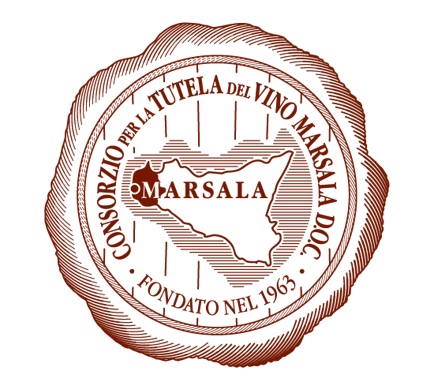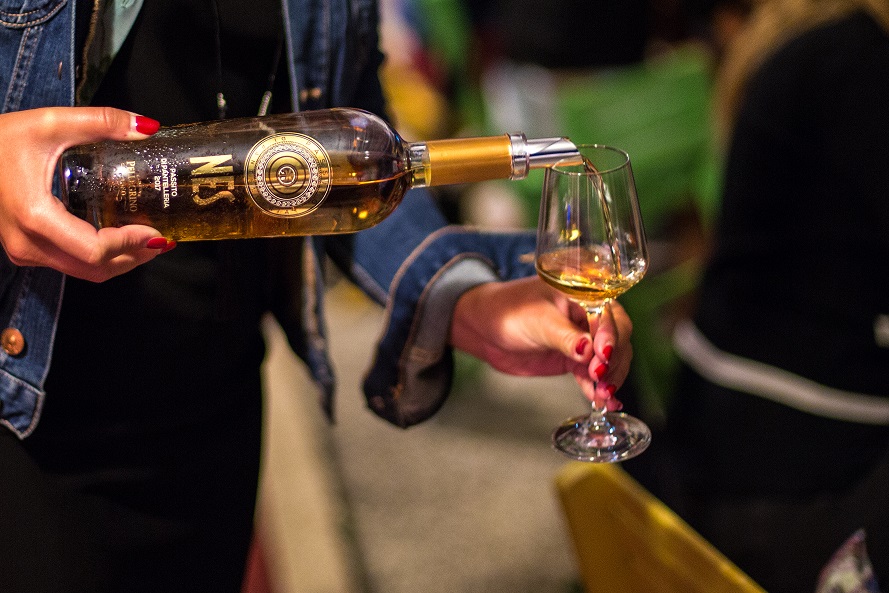Top 10 Iconic Argentine Wines: A Curated Selection
August 20, 2018
Discover Altura Maxima, epitomizing Argentina's rise in fine wines with a blend of terroir, tradition, and quality at accessible prices
By: James lawrence / Last updated: March 21, 2024
Estimated reading time: 10 minutes
Sicily represents Italy’s most exciting winemaking frontier. This gorgeous Mediterranean island is making waves after a long period of stagnation and over-production. It has attracted investors like Andrea Franchetti – the owner of Tenuta di Trinoro in Tuscany – who seek growing conditions unlike elsewhere in Europe. The Sicily region is as rich and diverse culturally as it is viticulturally – the sheer variety of terroirs and micro-climates suggests a continent rather than an island. It offers unparalleled opportunities, although the full realization of Sicily’s potential is only just beginning. Yet, in a sense, the island’s status as a leading producer of fine wine is old news.
For centuries, Sicily has been making a distant cousin of Sherry. The town of Marsala in western Sicily, which lends its name to this unique wine style, produces it. Capable of aging for many decades, Marsala [pronunciation: maar·saa·luh] has been famous since Admiral Nelson, the 18th-century British sailor who made Marsala an obligatory part of the Royal Navy’s cultural framework. Guests could not refuse an invitation to the officers’ mess; similarly, they could not turn down a glass of the pungent fortified wine from Italy’s most enchanting island.

Marsala owes much to the entrepreneurial spirit of British merchants in the 1700s. Liverpool-born John Woodhouse was the UK’s most famous wine merchant in that century. He was responsible for popularizing fortified wine icons like Sherry and Port in the UK, ensuring that the upper classes regarded a glass of Port as an essential hallmark of sophistication. In 1773, Woodhouse discovered that the town of Marsala was making a powerful wine style. He decided this could become a lucrative money-spinner, so he purchased several barrels. However, for the wine to survive the long journey to England, it was fortified with brandy. And so a legendary style was born.
Of course, Marsala had been produced for centuries before Woodhouse arrived in the 1700s. Sicily’s growers cultivated a broad palate of indigenous varieties, some made into a local wine style called ‘vino perpetuo’ or everlasting wine. The production methods mirrored those of Sherry, blending older vintages with younger wines in the cask to maintain a consistency of style and quality. The winemakers allowed the wine to age and gently oxidize over many years, often sweetening it with ‘mosto cotto,’ which means ‘cooked’ unfermented grape must.

However, until the British arrived, Marsala would have never contained spirit. The next generation of the Woodhouse family returned to Sicily in 1787, determined to expand the market for this delicious wine style. Yet, the Napoleonic Wars kick-started the international demand for Marsala wine. After Lord Nelson purchased a large quantity of Marsala, it inevitably became associated with naval tradition. This custom spread to wealthy households in the UK, and before too long, Port and Sherry had a serious rival.
Sadly, Marsala’s reputation hit rock bottom in the 20th century. Although Port and Sherry have suffered from changing habits and evolving fashions, Marsala has struggled to regain its former cachet. The style received its own DOC (appellation) in 1969, but unfortunately, the damage had already occurred. Today, even aficionados of Port and Madeira regard Marsala as little more than a kitchen standby.
So what happened? As is so often the case, Marsala was no longer in vogue by the mid-20th century. Growers responded by cheapening their product, achieving higher yields, taking less care in the winery, and using large amounts of chaptalization with cane sugar before bottling. As a result, the heavily sweetened plonk, suitable only for cooking, became Marsala’s new image. A few quality-minded producers attempted to fight back and remained determined to make traditional Marsala for discerning palates. Nevertheless, their efforts were not generally recognized.
But there is hope. In the 20th century, Marsala seemed to be in the deepest doldrums, but enthusiasts are slowly waking up to its charms. The top brands continue to release bottles of Marsala, which pay homage to this wonderful fortified wine style. Yet what ends up in your glass can vary enormously.
Not all Marsala is made as a fortified wine, although most are. The only universal definition of fortified wine involves increasing its alcoholic strength by adding grape spirit at some stage in its creation. In Sicily, this usually happens after fermentation has occurred. Growers have up to ten grape varieties at their disposal, including the ubiquitous Catarratto, Grillo, Inzolia, Nerello Mascalese, and Damaschino. These grapes will probably never leave Sicily – save occasional experimentation – imbuing Marsala with a flavor profile that cannot be replicated. After fermentation and blending, the wine is fortified with spirit – often sweetened – either with partially fermented grape juice or heated must. After that, the winemaker has numerous possibilities open to them. However, some owners prefer to fortify during the fermentation process. Others refuse to sweeten their wines before bottling.
Indeed, Marsala comes in all shapes and guises, ranging from relatively young wines to bottles released after more than 25 years. Some growers prefer to market young wines, known as fine (one year) or Superiore, matured for two years before release. Others specialize in making superior riserva styles (aged for four years) and vergine/soleras, matured for a minimum of five years in wood barrels. The top category is vergine or solera stravecchio. The winemakers will have aged these beautiful examples in barrels for at least a decade.
| DOC | Marsala DOC awarded in 1969 |
| Production Volume | 77,250 hl / 858,000 cases (5-year average) |
| Number of Producers | 17 |
| Area Under Vine | 1,218 ha / 3,008 acres (2019) |
| Types & Styles | Oro (Gold): A type that is amber due to the use of white grapes without mosto cotto. Ambra (Amber): This style is made with white grapes and mosto cotto, giving it a rich amber color. Rubino (Ruby): Made from red grapes, offering a ruby color. |
| Sugar Content Classification | Secco (Dry): Up to 40 grams of residual sugar per liter. Semi-Secco (Semi-Sweet): Between 40-100 grams of residual sugar per liter. Dolce (Sweet): Over 100 grams of residual sugar per liter. |
| Aging Categories | Fine (1-year minimum aging, including 8 months in barrel) Superiore (2 years minimum aging, including 20 months in barrel) Superiore Riserva (4 years minimum aging, including 44 months) Vergine/Solera (5 years minimum aging, including 56 months in barrel) Vergine or Solera Stravecchio (10 years minimum aging, including 116 months in barrel) |
| Export Markets | US, England, Germany, and France |

Marsala is also subject to a curious classification system not seen in other fortified-producing regions. Graders will classify the color and sugar content as ‘oro,’ ‘Ambra,’ and ‘Rubino,’ respectively, describing the wine’s hue, which ranges from deep golden to pinkish red. Like German and Austrian wine culture, Marsala’s producers also grade their wines according to sugar content. The categories are secco (dry), semisecco (semi-sweet), and dolce (sweet).
Contemporary versions of this noble fortified wine can be magnificent or a depressing reminder that lazy outfits still churn out overly sweetened, boring wines. In that sense, Marsala is arguably the most polarized of all the great Italian wine styles. As has Pellegrino and Bartoli, the leading firm Buffa has shown a remarkable commitment to promoting high-quality Marsala. The latter prefers to work outside the DOC framework for some of its top labels, including Vecchio Samperi and Vigna la Miccia.
Vecchio Samperi is probably our favorite example of Marsala. It is a love letter to the styles of wine made before the practice of adding grape spirit became commonplace. A racy and complex unfortified wine, its heady aromas are exquisite and addictive. Aged in soleras for an extended period, Samperi offers up notes of almonds, orange blossom, cinnamon, chocolate, and damson in the glass. Full-bodied and complex, it could occupy any space left by the best Port and Sherry wines. The sons of the former owner, Marco de Bartoli, also make a fantastic label called Ventennale, a blend of young and old vintages. Their DOC Marsalas are no less impressive. For a time, though, Bartoli almost stood alone.

Thankfully, a growing firmament of winemakers are now following suit. Marsala has not yet achieved a critical mass of high-quality labels; however, the situation has significantly improved compared to 15 years ago. If marketed and promoted intelligently, Marsala’s astounding diversity of styles should again find a welcome home in households. At the very least, we implore you to experiment with different food pairings. Marsala is seldom outmatched at the dinner table.
Dry Marsala, served chilled, will help your meal sing. Mainly if you’re serving hard and soft cheeses – Parmesan and Stilton are our top personal choices. The combination of rich texture and racy acidity enables Marsala to bring out the best in salty cheeses and foods like olives, nuts, and cured meats. But the possibilities are almost endless: Marsala is one of those wonderful wine styles that rarely clashes with gastronomy. Dry Marsala could match nearly any meat or fish, although we prefer the wine as an aperitif or post-dinner libation.
However, sweeter styles of Marsala will succeed where late-harvest Riesling wines and Sauternes can fail. A sweet bottle of Marsala can match any dessert, no matter how unctuous or decadent. Chocolate-based desserts are always a premier choice simply because the pairing never fails. Sauternes tends to be overwhelmed by heavier, sweet delicacies, but not so Marsala. We’ve seen gastronomes pair Tiramisu with sweet old Marsala and still come up for air. It is never outclassed.
The style also continues to thrive as an essential component of local gastronomy. Aficionados may regard this as sacrilege, but many of the world’s top chefs still consider Marsala an indispensable element in classical dishes. Who could resist slow poultry cooked in Marsala wine, with shallots, garlic, mushrooms, and herbs providing the supporting act? After the sauce reaches a syrupy consistency, you add cream, and all that’s left is a velvety, swarthy delight. The recipe also works well with pork tenderloin and fennel – braising a whole chicken in Marsala for hours provides a very sumptuous Sunday lunch. You’ll probably need two bottles: one for cooking, one for enjoying. Other recipes braise veal loins in Marsala, while we enjoy cooking fresh courgette and mushrooms in the wine before adding al dente penne pasta. Quick, simple, and to die for.
Marsala’s other famous contribution to Italian cooking is Zabaglione. It has perhaps fallen out of high fashion today, although we still see the dessert on restaurant menus across Italy. The beauty is its simplicity; Zabaglione combines just three ingredients: egg yolks, caster sugar, and Marsala. All you need is a bowl, whisk, and some serving dishes. The result is utterly delicious – both rich and refreshing. Zabaglione probably has Marsala to thank for that.
If you would like us to customize an exclusive luxury tour, contact us and let us know your travel plans. We offer luxury food and wine tours for private groups of a minimum two guests. In addition, all of our private, chauffeured tours are available year-round upon request.

